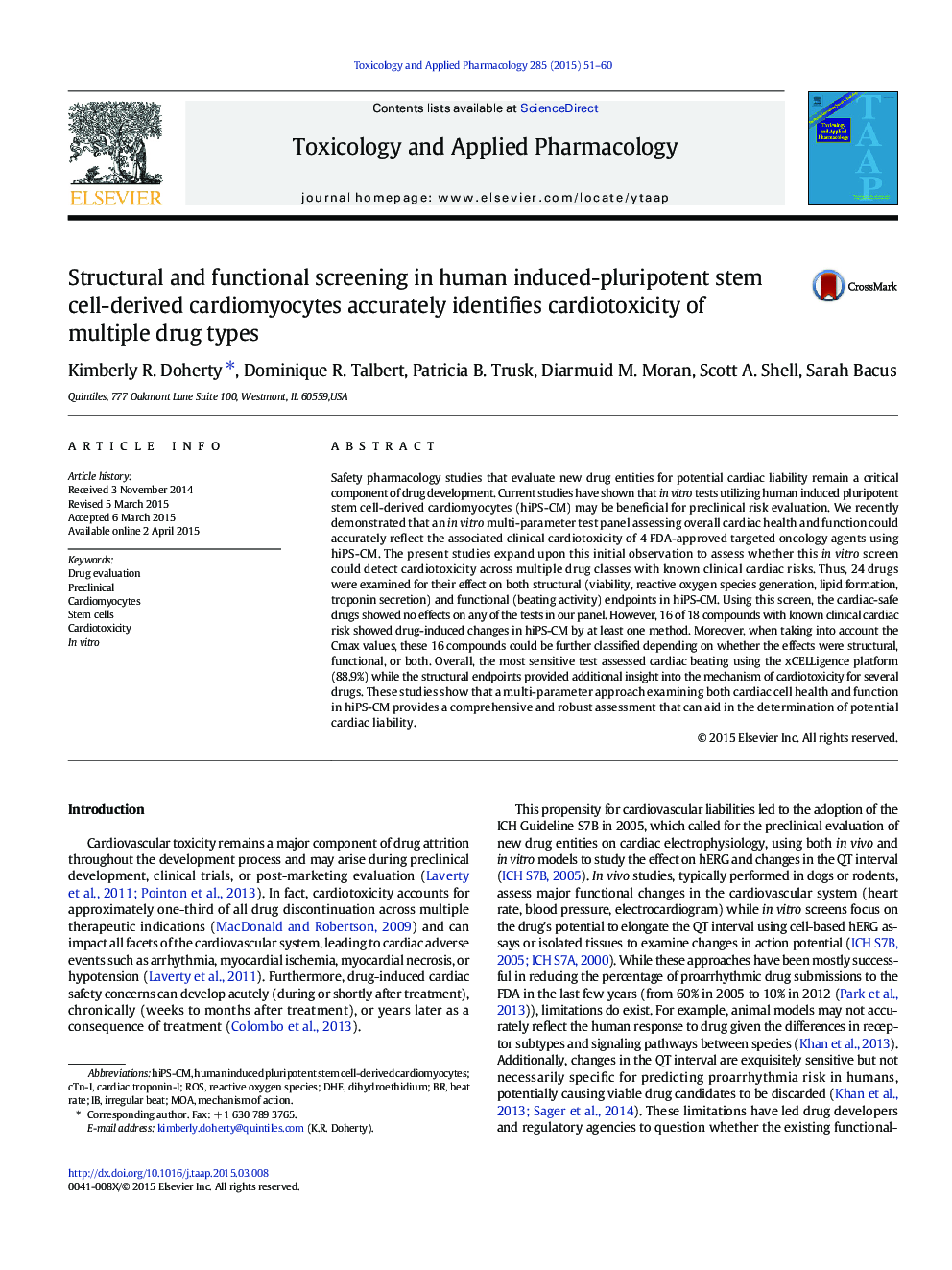| Article ID | Journal | Published Year | Pages | File Type |
|---|---|---|---|---|
| 2568397 | Toxicology and Applied Pharmacology | 2015 | 10 Pages |
•24 drugs were tested for cardiac liability using an in vitro multi-parameter screen.•Changes in beating activity were the most sensitive in predicting cardiac risk.•Structural effects add in-depth insight towards mechanism of cardiac toxicity.•Testing functional and structural endpoints enhances early cardiac risk assessment.
Safety pharmacology studies that evaluate new drug entities for potential cardiac liability remain a critical component of drug development. Current studies have shown that in vitro tests utilizing human induced pluripotent stem cell-derived cardiomyocytes (hiPS-CM) may be beneficial for preclinical risk evaluation. We recently demonstrated that an in vitro multi-parameter test panel assessing overall cardiac health and function could accurately reflect the associated clinical cardiotoxicity of 4 FDA-approved targeted oncology agents using hiPS-CM. The present studies expand upon this initial observation to assess whether this in vitro screen could detect cardiotoxicity across multiple drug classes with known clinical cardiac risks. Thus, 24 drugs were examined for their effect on both structural (viability, reactive oxygen species generation, lipid formation, troponin secretion) and functional (beating activity) endpoints in hiPS-CM. Using this screen, the cardiac-safe drugs showed no effects on any of the tests in our panel. However, 16 of 18 compounds with known clinical cardiac risk showed drug-induced changes in hiPS-CM by at least one method. Moreover, when taking into account the Cmax values, these 16 compounds could be further classified depending on whether the effects were structural, functional, or both. Overall, the most sensitive test assessed cardiac beating using the xCELLigence platform (88.9%) while the structural endpoints provided additional insight into the mechanism of cardiotoxicity for several drugs. These studies show that a multi-parameter approach examining both cardiac cell health and function in hiPS-CM provides a comprehensive and robust assessment that can aid in the determination of potential cardiac liability.
